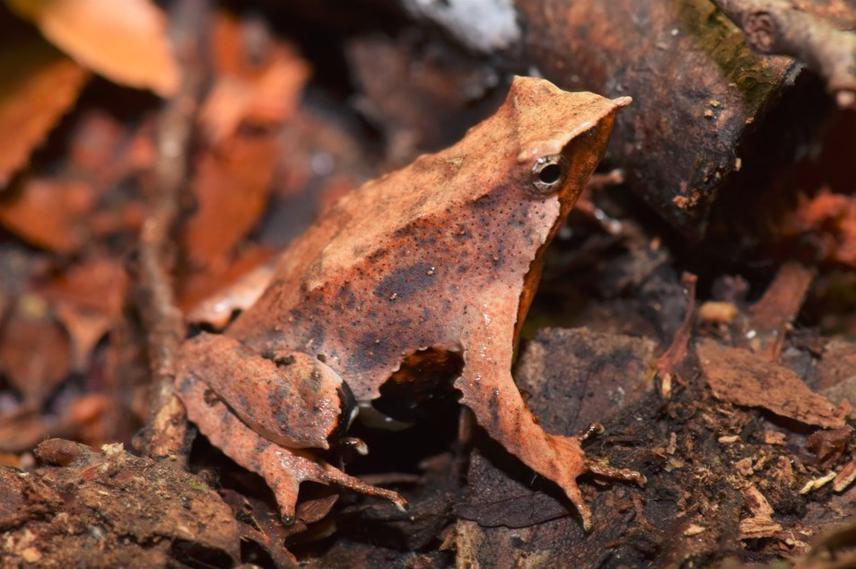Victorio Maximiliano Rocchi
The Darwin’s frog (Rhinoderma darwinii) is an endemic species whose distribution is restricted to the Andean temperate forests from Chile and Argentina. In Argentina, the occurrence of this species is only restricted to two National Parks. Even within this National Parks, this species is currently threatened by livestock agriculture, deforestation, urban development, fires, invasive species, disease (Chytrid fungus), agriculture, volcanoes, and droughts. For this the frog is listed as endangered by the IUCN Redlist. Although in Argentina R. darwinii is only known to occur within National Parks, there is a lack of information for several non-protected sites where this species could be present. Our project aims to improve the conservation status of a globally endangered species, the Darwin´s Frog and make it a flagship for the protection of Patagonian forests in Argentina

Darwin’s frog (Rhinoderma darwinii). © Maxi Rocchi.
For this, our project will be based on increase the existing ecological knowledge of the species in Argentina to develop efficient strategies for its conservation. In the project we are looking to: 1) Involve the local community in the protection of Darwin's frog and local amphibians; 2) Start a long-term monitoring program for Darwin Frog; 3) Evaluate the presence of chytridiomycosis infection, Batrachochytrium dendrobatidis (Bd); 4) Start control of invasive exotic species (Wild Boar and Wild Bull) in Darwin frog distribution zones in Argentina.
The conservation strategies involve: 1) transference of our ecological findings to the local community and desition makers; 2) Make and start a protocol accessible and present it to the National Parks Administration (APN); 3) Publish the collected data of Chytrid in a specialized scientific journal; 4) Reduce or eradicate one of the threats to Patagonian amphibians. By this we mean expect to develop efficient local management actions based on a higher ecological knowledge of the only two known Argentine populations of this frog. This is just the beginning of conservation work in the area.